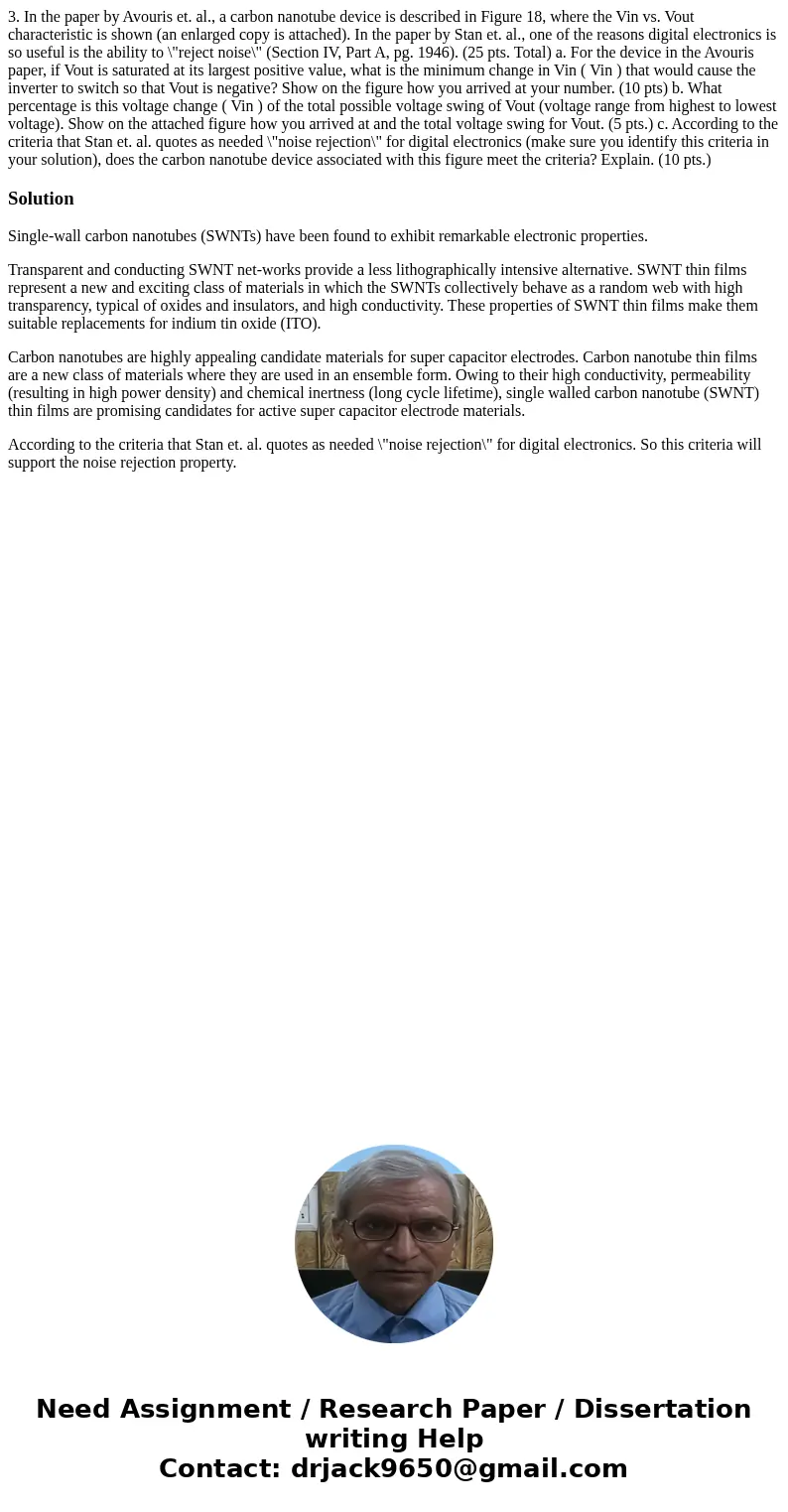3 In the paper by Avouris et al a carbon nanotube device is
3. In the paper by Avouris et. al., a carbon nanotube device is described in Figure 18, where the Vin vs. Vout characteristic is shown (an enlarged copy is attached). In the paper by Stan et. al., one of the reasons digital electronics is so useful is the ability to \"reject noise\" (Section IV, Part A, pg. 1946). (25 pts. Total) a. For the device in the Avouris paper, if Vout is saturated at its largest positive value, what is the minimum change in Vin ( Vin ) that would cause the inverter to switch so that Vout is negative? Show on the figure how you arrived at your number. (10 pts) b. What percentage is this voltage change ( Vin ) of the total possible voltage swing of Vout (voltage range from highest to lowest voltage). Show on the attached figure how you arrived at and the total voltage swing for Vout. (5 pts.) c. According to the criteria that Stan et. al. quotes as needed \"noise rejection\" for digital electronics (make sure you identify this criteria in your solution), does the carbon nanotube device associated with this figure meet the criteria? Explain. (10 pts.)
Solution
Single-wall carbon nanotubes (SWNTs) have been found to exhibit remarkable electronic properties.
Transparent and conducting SWNT net-works provide a less lithographically intensive alternative. SWNT thin films represent a new and exciting class of materials in which the SWNTs collectively behave as a random web with high transparency, typical of oxides and insulators, and high conductivity. These properties of SWNT thin films make them suitable replacements for indium tin oxide (ITO).
Carbon nanotubes are highly appealing candidate materials for super capacitor electrodes. Carbon nanotube thin films are a new class of materials where they are used in an ensemble form. Owing to their high conductivity, permeability (resulting in high power density) and chemical inertness (long cycle lifetime), single walled carbon nanotube (SWNT) thin films are promising candidates for active super capacitor electrode materials.
According to the criteria that Stan et. al. quotes as needed \"noise rejection\" for digital electronics. So this criteria will support the noise rejection property.

 Homework Sourse
Homework Sourse